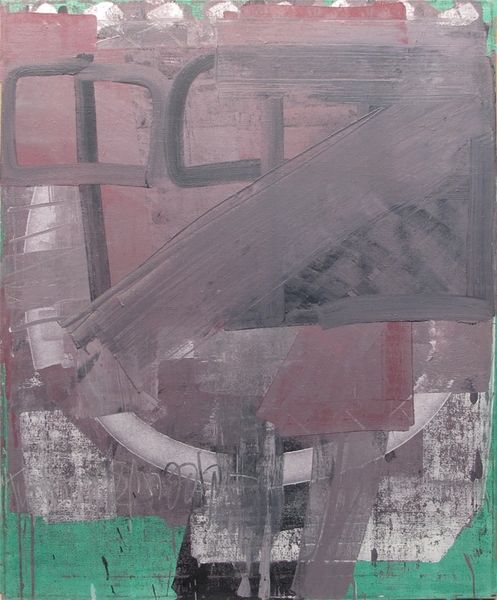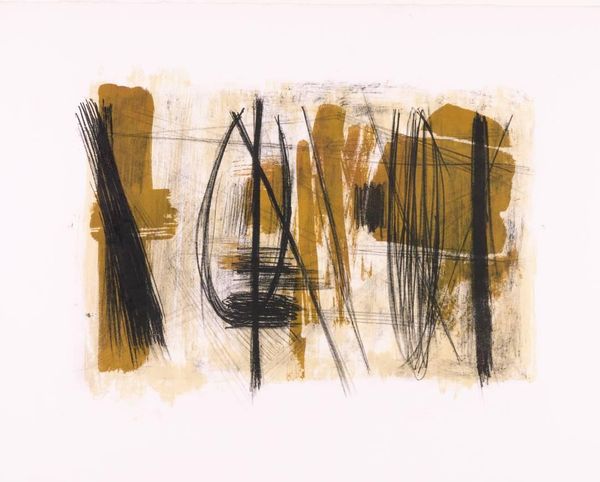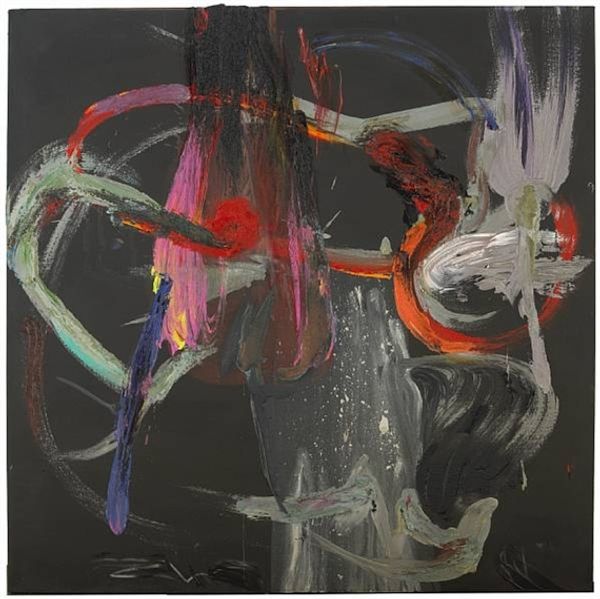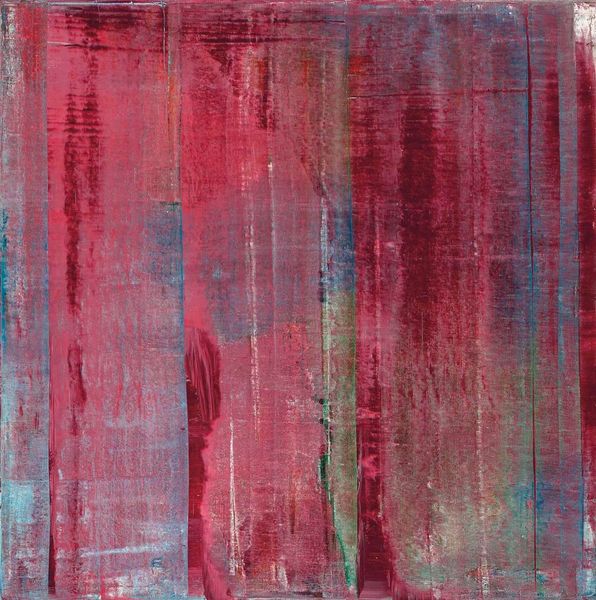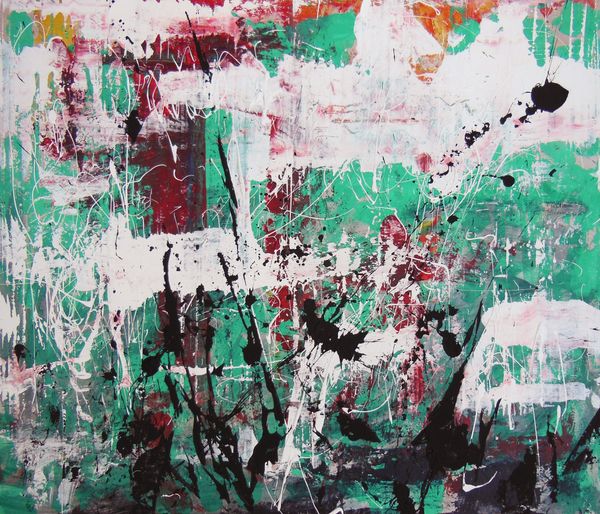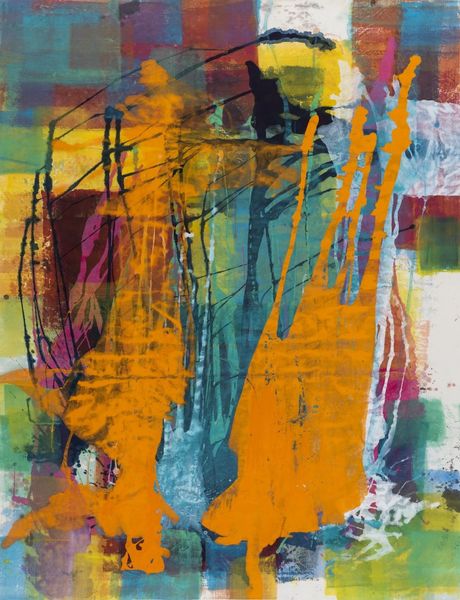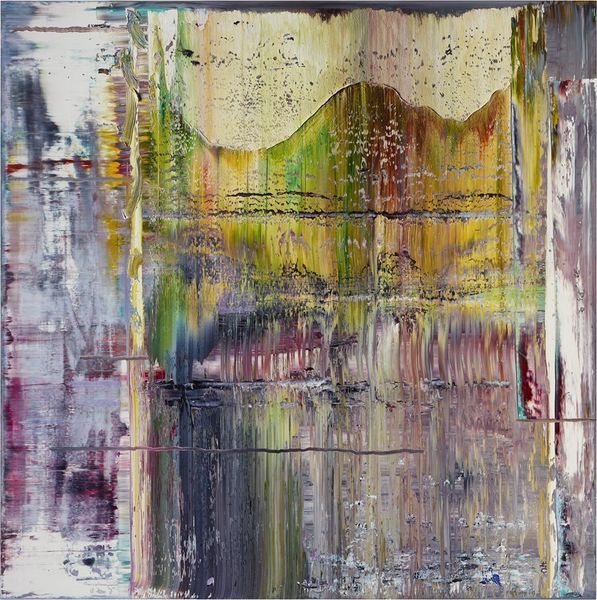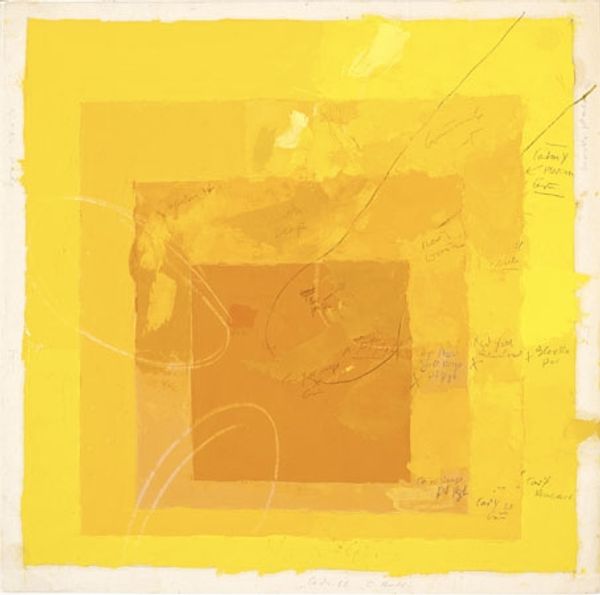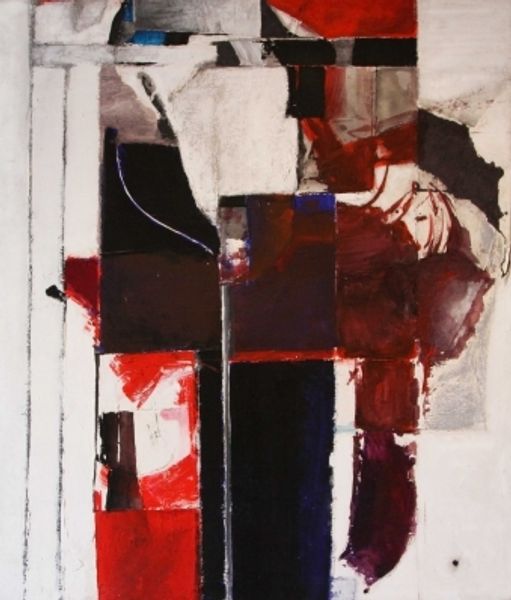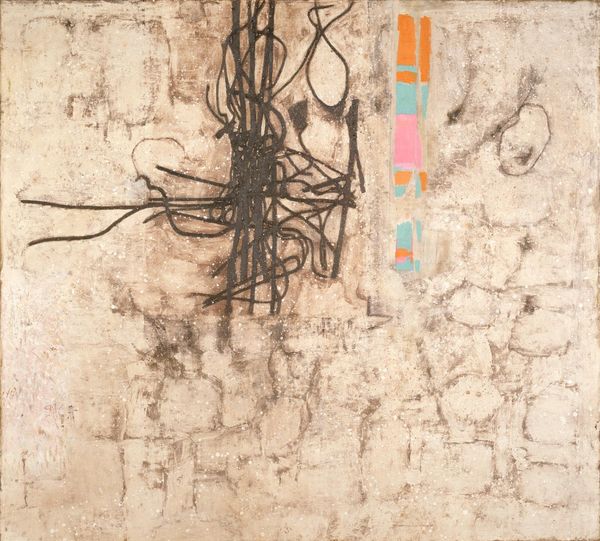
mixed-media, acrylic-paint
#
mixed-media
#
abstract painting
#
acrylic-paint
#
acrylic on canvas
#
abstraction
#
line
#
mixed medium
#
mixed media
#
modernism
Copyright: Moshe Kupferman,Fair Use
Curator: This piece is an untitled mixed-media work by Moshe Kupferman, created in 1998. It's got quite a presence, don't you think? Editor: It does—there's an almost frantic energy about it. So much layering and scratching. I see the materials are built up and then scraped away. Curator: Exactly! Kupferman often used a process of layering and erasure. He’d build up acrylic paint and other media, only to then aggressively scrape back into it. It’s as if he’s revealing the history of the painting's creation. A material archaeology of mark-making. Editor: It definitely feels like a record of process, and there's an undeniable tension between the orderliness of some areas—like the gridded background—and the chaotic scribble elsewhere. Curator: I see that tension too. I often wonder if he was exploring the push and pull between control and freedom, order and chaos—within himself, even. I always think abstraction opens space for the subconscious. The materials guide your own history of layering. Editor: Speaking of materials, there's a kind of 'poor' aesthetic at play here, wouldn't you say? Very raw and immediate, refusing refinement, with emphasis on visible process as the subject. Like the paint and the mixed media want to remain honest—not just art, but making-art. Curator: Absolutely. It has this beautifully brutal honesty, that allows the emotional life of the painting breathe through. Its visual textures are a perfect material record. Editor: And, of course, the “unfinished” look—a Modernist trope allowing the audience to participate in the formation of the artwork's final reading. Curator: Yes, very true. It reminds me of how poems, too, are never truly finished, just abandoned. This painting captures something similar. Each mark invites new connections and feelings, as you experience it through time. Editor: It’s remarkable how he achieves that effect. I think it's in the vulnerability displayed with such a direct application and removal of each substance. It reminds us of the vulnerability in making as a job. Curator: Ultimately, it reveals making-art as being fully present and letting the piece’s history express itself on the canvas, rather than through intention. It’s a dance of intention and accident. Editor: Very well put. Thanks, as always!
Comments
No comments
Be the first to comment and join the conversation on the ultimate creative platform.
